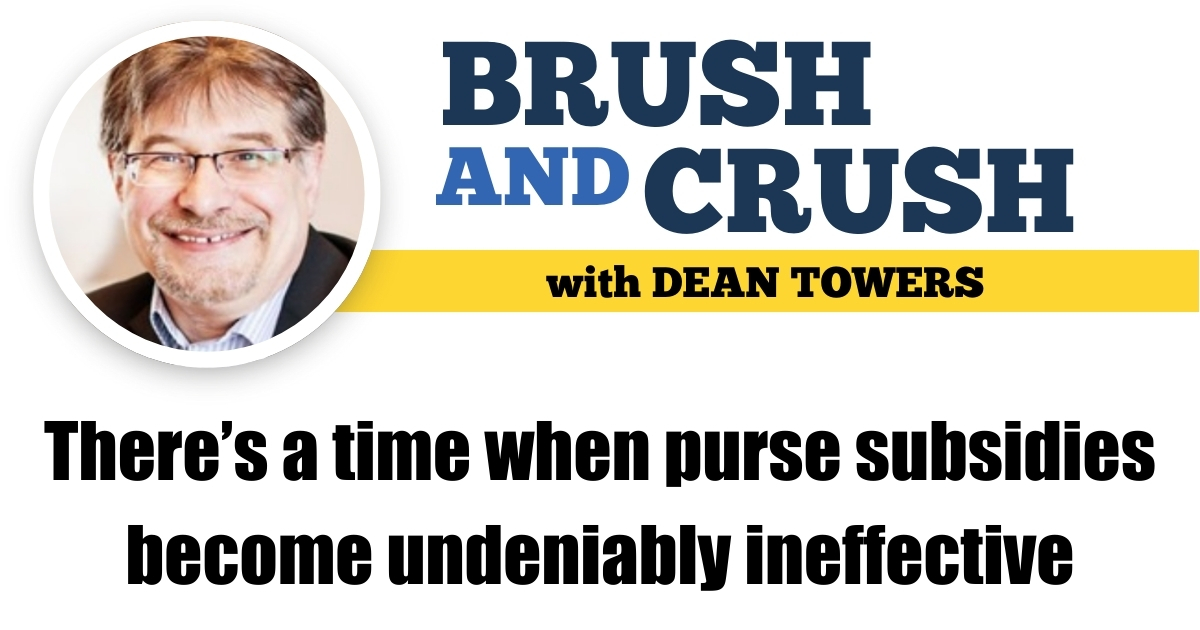There’s a time when purse subsidies become undeniably ineffective
Sooner or later, the sport of horse racing needs to have a serious discussion about how purse money is distributed.
by Dean Towers
Last week the Kentucky Downs all-turf thoroughbred meet concluded. With historical racing machine revenue and the Kentucky Thoroughbred Development Fund supplying most of the prize money, a record $37.3 million was distributed in purses over 76 races, for a per-race average of $490,000.
Remarkably, 15 stakes races with purses of $1,000,000 or more were run over the very short meet.
This is something to celebrate, correct? If we put our business person hat on, perhaps there’s more to it.
In 2020, purses at Kentucky Downs totalled about $12.2 million, and they attracted large fields of 9.98 per race. The handle of about $60 million was about five times the purse.
In 2024, purses skyrocketed to the aforementioned $37.3 million and they did attract a few more horses (an average field size of 10.89 per race) but frankly, it was nothing to write home about. Meanwhile, handle rose as well, to about $90 million, but one dollar in purses only generated $2.43 of handle; a number which should set off serious alarm bells.
From a revenue perspective (at 20 per cent takeout) the meet generated about $12 million in 2020 while spending about $12 million.
In 2024, the meet generated about $18 million in revenue, while they spent $37.3 million.
Injecting $25 million into a business and not increasing the supply of horses, while getting back only $6 million more in revenue doesn’t make a whole lot of sense to regular, every day business people. But strangely, reading the headlines, it seems to be a reason to celebrate.
The obvious retort is that increased purses don’t just go up in smoke, they are distributed to owners, and that’s true.
But in this case — with 15 $1 million races — they’re going to a very few already well-capitalized people. This buttresses the high-end yearling and breeding market, yes, but mid-market and small markets are left with scraps (and the business is left with an overall falling foal crop).
We see this phenomenon playing out in harness racing as well; in Kentucky certainly, but even elsewhere. The high-end stakes purses are all churning lots and lots of cash to many of the usual trainers and owners (and God bless ‘em, they invest right back into the market with partnerships on a $700,000 yearling). But what’s everyone else left with?
I believe that sooner or later the horse racing business needs to take a professional, detailed, analytical, business-focused look at purse subsidies. And in my view, each and every time, at least these two criteria need to be met to ensure this money is spent in the most optimal fashion.
1. Does the money appreciably grow handle? When handle grows, the business grows, and the proceeds are distributed more evenly.
2. Will the money, distributed in the proposed way, grow the foal crop?
If an influx in capital is not growing a customer base and bringing in more revenue, a business won’t do it. If an injection of capital doesn’t grow gross sales of whatever it is you’re selling with your supply chain, a business won’t do it.
In each of those cases any business will adjust, pivot and do something else.
In horse racing, neither of those criteria have been met for years, yet we seem to give it all one big continual green light and pretend there’s nothing wrong.
I think we can all agree that the way the industry distributes purse money can’t go on in this way forever. I’d suggest the time has come to not just pay lip service to these important discussions.

















